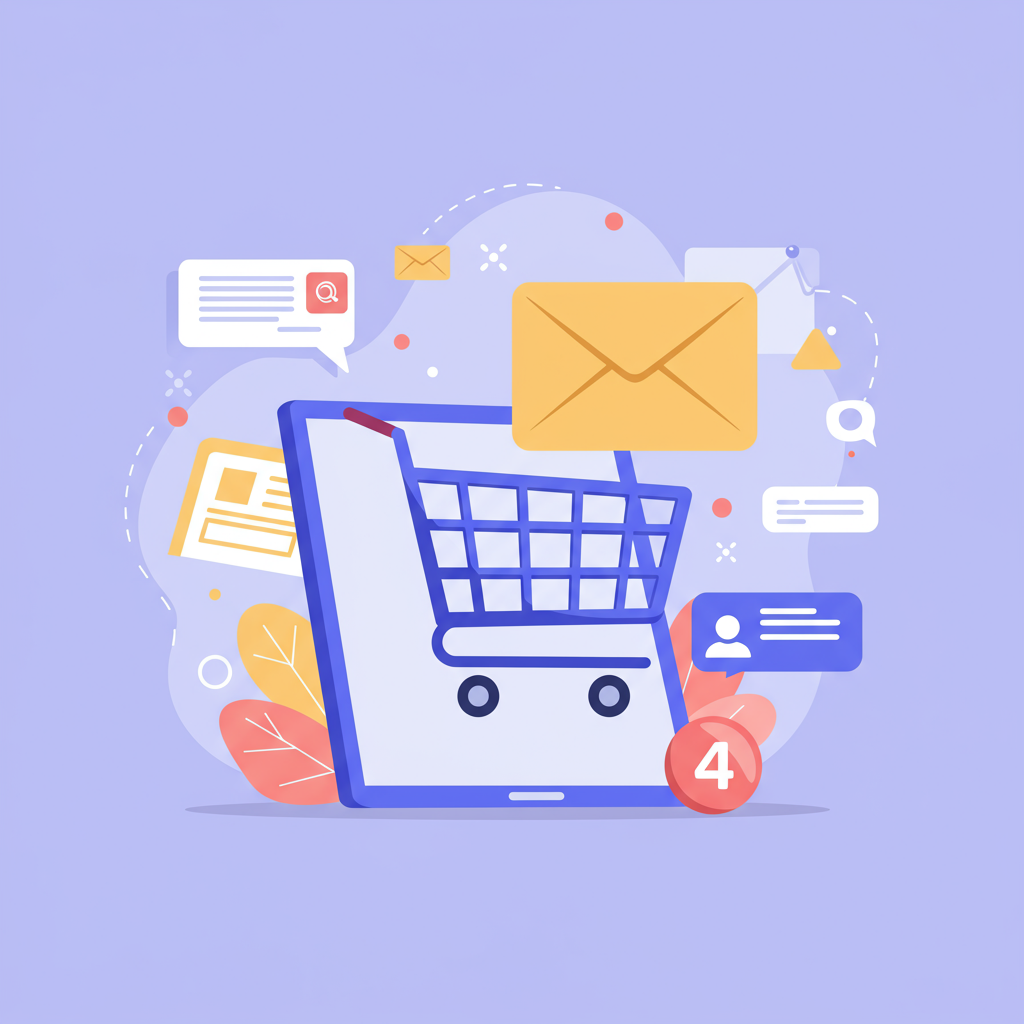Transforming abandoned carts into completed purchases with a strategic email sequence.
Hello fellow Shopify merchants! I’m here today to talk about one of the most critical, yet often underutilized, strategies for recovering lost sales: the abandoned cart email series.
If you’re running an online store, you’ve undoubtedly experienced it. A customer browses your products, adds items to their cart, and then… they leave. Poof! Gone.
This isn’t just a minor inconvenience; it’s a significant chunk of potential revenue walking out the digital door. The average abandoned cart rate hovers around 70%, which is staggering.
Imagine if 7 out of 10 customers walked into your physical store, filled a basket, and then just left it at the checkout. You wouldn’t stand by idly, would you?
That’s precisely why an effective abandoned cart email strategy is not just a good idea; it’s an absolute necessity for any thriving Shopify business.
While Shopify offers a basic abandoned cart recovery feature, I want to dive deeper into building a *series* of emails that truly converts.
A single email is good, but a well-crafted sequence of emails significantly increases your chances of bringing that customer back to complete their purchase.
Think of it as a gentle, persistent nudge, reminding them of what they left behind and addressing any potential hesitations.
So, let’s break down the ideal abandoned cart email series, focusing on timing, content, and best practices.
**Email 1: The Immediate Reminder (Sent within 30-60 minutes)**. This is your first and most crucial touchpoint.
The goal here is simple: remind them they left something behind. Don’t overthink it. They might have been distracted, had a technical glitch, or just needed a moment.
Your subject line should be clear and direct, something like “Did you forget something?” or “Your cart is waiting!”.
The email content should be concise. Display the items they left in their cart, include a clear call-to-action (CTA) button to “Complete Your Order” or “Return to Cart.”
Personalization is key. Address them by name and show the exact products they abandoned. This makes the email feel less generic and more helpful.
**Email 2: The Value Proposition / Incentive (Sent 24-48 hours later)**. If the first email didn’t work, it’s time to add a little more persuasion.
This email aims to overcome common objections. Perhaps they were price-sensitive, or unsure about the product’s benefits.
Consider offering a small incentive, like free shipping or a modest discount (e.g., 5-10% off). Be careful not to train customers to always abandon for a discount.
Highlight key benefits of your products or brand. Include social proof, such as customer testimonials or star ratings, to build trust.
Your subject line could be “Still thinking about it? Here’s a little something…” or “Don’t miss out on these items!”.
Reiterate the clear CTA to return to their cart. Make it easy for them to pick up exactly where they left off.
**Email 3: The Last Chance / Urgency (Sent 3-5 days later)**. This is your final, more urgent attempt to recover the sale.
Introduce a sense of scarcity or urgency. “Your cart expires soon!” or “Limited stock remaining for items in your cart.”
You might offer a slightly stronger incentive if you’re comfortable, or emphasize unique selling propositions that differentiate you from competitors.
Address common FAQs about shipping, returns, or product quality. Provide a direct link to your customer support if they have questions.
This email should reinforce the value and benefits, reminding them why they added those items in the first place.
Beyond the sequence, there are crucial elements for *all* your abandoned cart emails.
**Compelling Subject Lines**: They are your first impression. Use emojis, personalization, and create curiosity or urgency.
**Mobile Optimization**: A vast majority of online shopping happens on mobile. Ensure your emails look perfect on any device.
**Clear Call-to-Action (CTA)**: Make it prominent, easy to click, and descriptive. “Complete Your Order” is much better than “Click Here.”
**High-Quality Product Images**: Remind them visually of the items they left behind.
**Branding Consistency**: Your emails should reflect your store’s look and feel, reinforcing your brand identity.
**Social Proof**: Integrate reviews, testimonials, or user-generated content to build trust and confidence.
**Customer Support Access**: Make it easy for them to ask questions by including a link to your FAQ or contact page.
**Exclusion Rules**: Ensure customers who *do* complete their purchase after an email are automatically removed from the sequence.
**A/B Testing**: Don’t set it and forget it! Test different subject lines, CTAs, incentives, and timing to see what resonates best with your audience.
**Segmentation**: For advanced users, consider segmenting your abandoned cart emails based on cart value, specific products, or customer history.
For instance, a high-value cart might warrant a slightly different, perhaps more personalized, follow-up.
While Shopify’s built-in feature is a start, I highly recommend exploring dedicated email marketing platforms like Klaviyo, Omnisend, or Mailchimp.
These tools offer far more robust automation, segmentation, and analytics capabilities, allowing you to fine-tune your strategy.
Implementing a well-thought-out abandoned cart email series is one of the most effective ways to boost your Shopify store’s revenue.
It’s about nurturing leads, overcoming objections, and providing that gentle reminder that often makes all the difference.
Don’t leave money on the table. Invest time in perfecting your abandoned cart strategy, and you’ll see a significant return.
What do you think about this article? Do you have any abandoned cart strategies that have worked wonders for your store?
Continuously monitor your analytics, adapt your approach, and watch your conversion rates climb.
This isn’t just about recovering lost sales; it’s about building a stronger, more resilient business.






